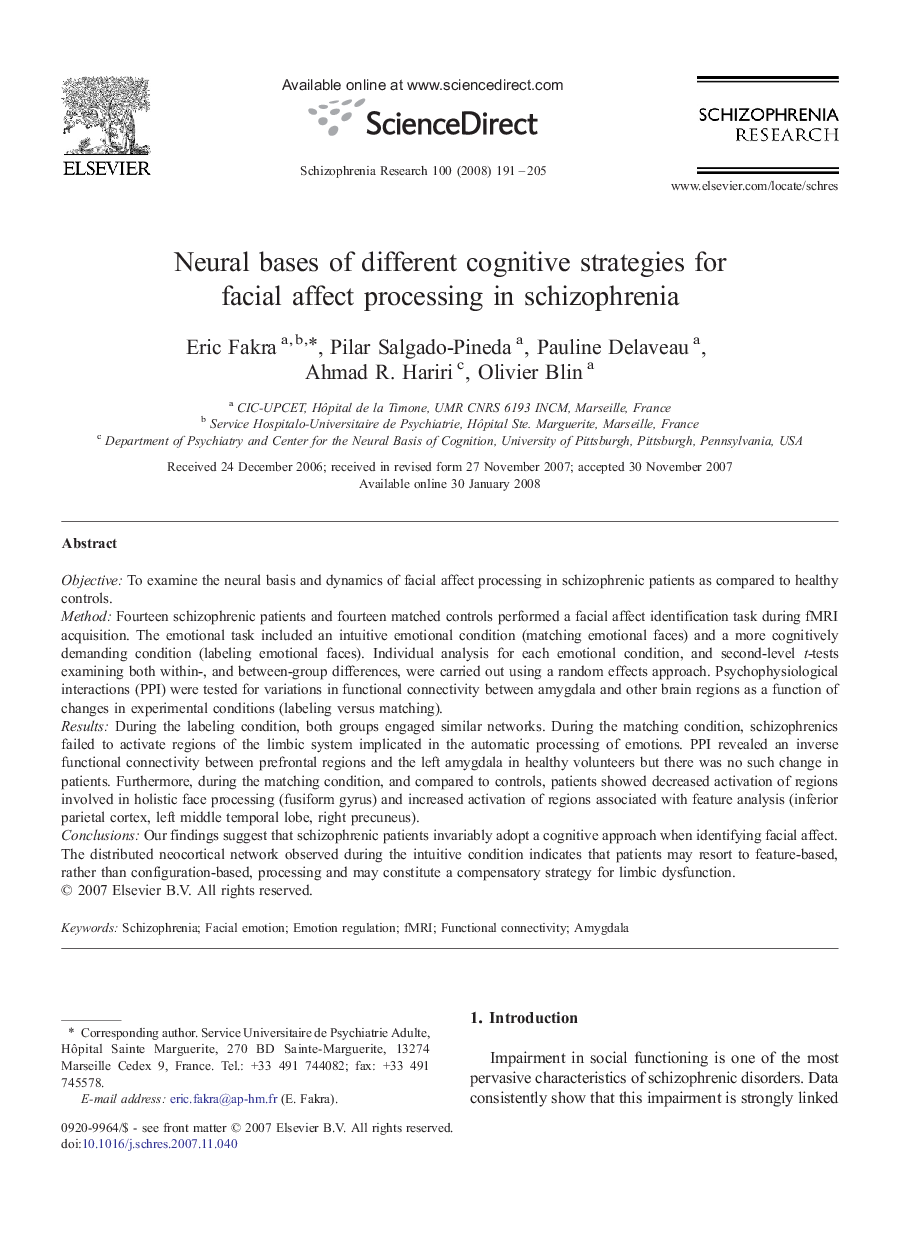| کد مقاله | کد نشریه | سال انتشار | مقاله انگلیسی | نسخه تمام متن |
|---|---|---|---|---|
| 339608 | 548096 | 2008 | 15 صفحه PDF | دانلود رایگان |

ObjectiveTo examine the neural basis and dynamics of facial affect processing in schizophrenic patients as compared to healthy controls.MethodFourteen schizophrenic patients and fourteen matched controls performed a facial affect identification task during fMRI acquisition. The emotional task included an intuitive emotional condition (matching emotional faces) and a more cognitively demanding condition (labeling emotional faces). Individual analysis for each emotional condition, and second-level t-tests examining both within-, and between-group differences, were carried out using a random effects approach. Psychophysiological interactions (PPI) were tested for variations in functional connectivity between amygdala and other brain regions as a function of changes in experimental conditions (labeling versus matching).ResultsDuring the labeling condition, both groups engaged similar networks. During the matching condition, schizophrenics failed to activate regions of the limbic system implicated in the automatic processing of emotions. PPI revealed an inverse functional connectivity between prefrontal regions and the left amygdala in healthy volunteers but there was no such change in patients. Furthermore, during the matching condition, and compared to controls, patients showed decreased activation of regions involved in holistic face processing (fusiform gyrus) and increased activation of regions associated with feature analysis (inferior parietal cortex, left middle temporal lobe, right precuneus).ConclusionsOur findings suggest that schizophrenic patients invariably adopt a cognitive approach when identifying facial affect. The distributed neocortical network observed during the intuitive condition indicates that patients may resort to feature-based, rather than configuration-based, processing and may constitute a compensatory strategy for limbic dysfunction.
Journal: Schizophrenia Research - Volume 100, Issues 1–3, March 2008, Pages 191–205